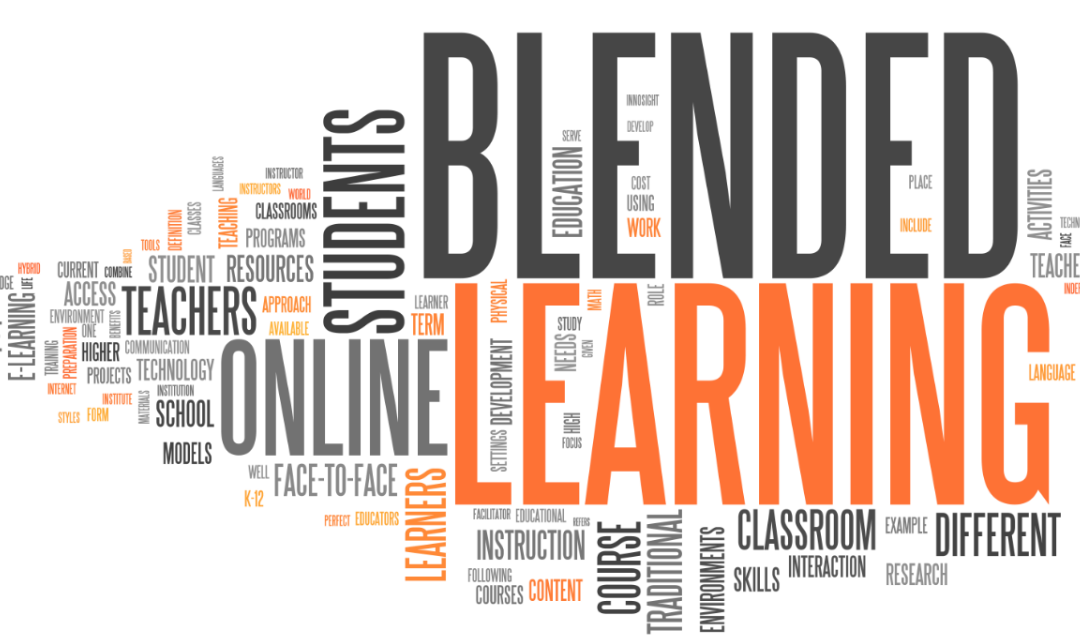
by Kim Loomis | Dec 18, 2017 | Blended Learning, Program Design, Uncategorized
Last month I had the opportunity to share options for digital learning that opens doors for high school students from the early freshman year to college ready senior year. Often, we think of digital courseware as a solution to a single problem; typically credit recovery or within alternative education. Having courseware opens numerous opportunities. Check out the Apex Learning Personalized Learning webinar: Think Outside the Box – Moving Beyond Credit Recovery. When designing digital learning environments, teacher preparation is just as important as student readiness. Personally, I’m a huge fan of “go slow, to go fast.” This means start with something small, something easy for both students and teachers. Use a tiny pilot. Watch it closely, refine as needed. Set everyone – the students, the teachers, the digital courseware – up for success. Since the digital content is new to both students and teachers, think of ways to create a learning environment that allows for familiarity with as little pressure as necessary. For example, elective classes can be fun and engaging, typically requiring less homework. Given a choice, start with electives. Freshman year is an ideal place to have students experience digital success with an online elective, embedded in an advisory type blended environment. Digital courseware can be introduced in a blended classroom by using the CIA model of blended learning, where teachers have a full understanding and embrace a balanced approach to digital curriculum, guided instruction, and authentic assessment. Blended classrooms are an ideal way to introduce students to taking ownership of their own learning, in a nurturing environment. Students still have a structured learning environment and see...

by Kim Loomis | Oct 12, 2017 | Blended Learning, Digital Learning Models, Program Design
Think Outside the Box – A new book for Secondary Schools I’ve spent the last year accumulating and assembling program advise and deployment designs for secondary schools into a new book. I’ve gathered these words of wisdom, (nearly twenty years’ worth in the digital learning front) from working with hundreds of schools and thousands of classroom teachers in Nevada’s Clark County School District, the fifth largest in the nation. Below are a few excerpts from my new book titled: Think Outside the Box: The CIA of Blended Learning and 10+ Designs for Secondary Schools. Introduction Having access to digital content creates scenarios that you may have not even considered. Thinking outside the box allows us to see beyond the most obvious. Thinking outside the box opens doors to new prospects. Thinking outside the box forces us to be innovative. That is why this book is titled think outside the box. Boxes come in all sizes; from the student information system in your district, to the four walls of a classroom, or even the socio-economic classification one was raised in. It’s a reminder to all of us that boxes do not define our limitations. Not only will schools of the future need to think outside the box, they must think differently about the relationships of curriculum, instruction, and assessment (CIA). In blended and personalized learning, that’s: Digital Curriculum Guided Instruction Authentic Assessment Part 1 – Foundations of Blended I believe the power of technology lies in digital curriculum. It has the potential to open the doors to a brighter future, help fill gaps, and provide more time...

by Kim Loomis | Aug 27, 2017 | Blended Learning, Digital Learning Models, Program Design
School is in (or just about to begin). Now is an appropriate time of the year to reflect on your desires and dreams for digital learning. It starts with a goal. Knowing where you want to be in five years. Casting a vision for the future. Working toward that goal each day. Success will come with challenging work, learning from failures, and the tenacity of your team to accomplish the dream. Earlier this month, I had the pleasure to share Clark County’s path of success in a recent podcast, hosted by Michigan Virtual Learning Research Institute (MVLRI). Listen to the 30 minute Podcast #40 August is a wonderful time of the year. The new school year is upon us. The energy level is high. Excitement fills the air from parents, students, and teachers. How will you capitalize upon this? Who can you reach out to support your dreams and desires? I’ve been at five different schools in the last two weeks, from traditional comprehensive, alternative education, and specialty schools for adjudicated youth, plus helping with a brand-new school opening this year targeting students overcoming the chains of addition. It’s an exciting time for digital learning. More schools are thinking outside the box when it comes to the possibilities of online courseware. Well beyond just credit recovery! When I think back to the how this all started, I’m taken to the humble beginnings in Clark County School District, with a goal of one-third of all students in an online or blended learning environment. The steps we took to meet this goal started with teacher professional development, followed with access to...

by Kim Loomis | May 14, 2017 | Blended Learning, Online Learning, Program Design
I often get asked about changing mindsets for digital learning. This is a great question. I tried to tackle this question in the June 2016 blog post. In the last year, I’ve come to realize there are four identifiable mindsets for digital learning. Before we get ahead of ourselves, let’s first ask, “What is a mindset?”. Mindset as a Competency The Learning Accelerator partnered with the International Association for K-12 Online Learning (iNACOL) to work with experts and practitioners around the country to draft the iNACOL Blended Learning Teacher Competency Framework. The document identifies 12 key competencies, organized into four large domains and mindsets is the largest domain. In the document, mindset is defined as “the core values or beliefs that guide thinking, behaviors and actions that align with goals of educational change and mission.” Four Digital Learning Mindsets Teaching is a craft, an art, and the core values stem from seeking instructional methods that better serve students’ understanding and growth. The digital learning environment requires teachers to re-think their place, their role, and the needs of students when digital curriculum aides in the delivery of content. When looking back at the 10 models of digital learning we begin to see several different educator mindsets when deploying digital curriculum: Online Blended Innovator Designer Each of these minds sets come at a different cost of change. See the Four Digital Mindsets infographic below. Online $$$ Too often when digital content is first introduced, the initial thought is, “I’m now an online teacher.” This is a huge mind shift change. Teachers feel out-of-control when the digital content takes the lead and determines the...

by Kim Loomis | Feb 26, 2017 | Blended Learning, Digital Learning Models, Program Design
When you think of the words “blended learning” what image comes to mind? I ask this because blended learning models are not just one thing. It’s like the words, “vehicle” or “home.” You have a mental image of a vehicle and a home, but your mental image is probably not the same as the person next to you. Vehicles and homes come in many different shapes, sizes, colors and prices. A pickup truck, compact automobile, and luxury sports car are all very different vehicles. As are a two-story, ranch, and apartment homes. Sadly, for some of our students their vehicle is home. Blended learning, like vehicles and homes, come in many different formats. Some are just a few small steps outside the traditional setting, others are very large leaps away from what one would consider a traditional classroom. And like the varying prices of vehicles and homes, the price or mind shift change in pedagogy and structures of the blended classroom or school can be low or steep. Blended learning is not just one thing. It’s underpinning, like the four wheels of a vehicle or the foundation of a home are described in the definition: combining online digital curriculum with traditional classroom instructional methods, but each deployment model, just like vehicles and homes, will look and feel very different when filled with students and teachers. Like the varying prices of vehicles and home there is a cost, or “purchase” price of the adoption of each type of blended learning model. As you consider blended learning adoption, think about what structural changes your classroom, school, or district would...

by Kim Loomis | Dec 31, 2016 | Blended Learning, Digital Learning Models, Program Design
Every quality classroom is built upon three components – curriculum, instruction, and assessment, or CIA for short. In a digital learning world the CIA is the same, just with qualifiers: Digital Curriculum Guided Instruction Authentic Assessment See the CIA of Blended Learning infographic below. Digital Curriculum Digital curriculum typically comes in the form of software or open education resources (OER). It is a rare situation when a teacher can actually create their own digital curriculum that has all the components of an effective lesson from an opening hook, review of previous knowledge, delivery of new content, real-world application, a summative close and tasks for students to demonstrate understanding (e.g. assignments and assessments). Typically a teacher gathers pre-made resources from others such as publishers to ‘deliver’ lesson, rarely are they actually ‘developing’ lessons from scratch. Teacher are good at curating OER materials, but this takes time. Teachers that have ‘flipped’ their classroom by creating video lessons will tell you that digital content development is time consuming, and most schools only provide a very small preparation period for teacher planning (not developing). Thus the need for high quality software or applications that can aid in the delivery of digital content is needed. Digital curriculum can be thought of as a teacher’s aide with significant advantages: Engages student attention and delivers content Provides data with insight to student strengths and weaknesses Has no limits as to when or where it can be accessed Is ideal for presenting and assessing student understanding and practicing skills Guided Instruction One thing a digital curriculum can not do is establish a relationship with students. That’s...








Recent Comments